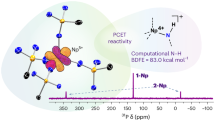Abstract
SOME of the effects produced in the intact animal by a number of quaternary ammonium compounds, such as D-tubocurarine chloride in high doses1, tetraethylammonium chloride and hexamethonium2,3 following intravenous administration have been attributed to the action of these agents on the central nervous system. Conclusions concerning the possibility of these agents acting centrally as well as peripherally, however, can be only speculative since there is little convincing actual evidence that any of the positively charged organic compounds can reach the tissues of the central nervous system following peripheral administration. The presence of pro-stigmine in the effluent from perfused cerebral ventricles of cats following intravenous administration has been demonstrated by indirect bioassays4. During the course of an investigation of the physiological disposition of hexamethonium and some of its derivatives5, the sulphonium analogue, hexamethylene bisdimethylsulphonium dibromide, was detected in brain tissue of rats following parenteral administration. This finding prompted further study of the distribution between blood and brain of this and other onium compounds.
This is a preview of subscription content, access via your institution
Access options
Subscribe to this journal
Receive 51 print issues and online access
$199.00 per year
only $3.90 per issue
Buy this article
- Purchase on Springer Link
- Instant access to full article PDF
Prices may be subject to local taxes which are calculated during checkout
Similar content being viewed by others
References
McCawley, E. L., J. Pharmacol. Exp. Therap., 97, 129 (1949).
Lape, H. E., and Hoppe, J. O., J. Pharmacol. Exp. Therap., 116, 453 (1956).
Dontas, A. S., and Nickerson, M., J. Pharmacol. Exp. Therap., 120, 147 (1957).
Bhattacharya, B. K., and Feldberg, W., Brit. J. Pharmacol., 13, 163 (1958).
Levine, R. M., and Clark, B. B., Fed. Proc., 16, 317 (1957).
Levine, R. M., and Clark, B. B., J. Pharmacol. Exp. Therap., 114, 63 (1955).
Mitchell, R., and Clark, B. B., Proc. Soc. Exp. Biol. Med., 81, 105 (1952).
Mitchell, R., Truant, A. P., and Clark, B. B., Proc. Soc. Exp. Biol. Med., 81, 5 (1952).
Oeff, K., and Konig, A., Arch. Exp. Pathol. Pharmakol. Naunyn-Schmiedeberg's, 226, 98 (1955).
Paton, W. D. M., and Zaimis, E. J., Pharmacol. Rev., 4, 219 (1952).
Brodie, B. B., and Hogben, C. A. M., J. Pharm. and Pharmacol., 9, 345 (1957).
Author information
Authors and Affiliations
Rights and permissions
About this article
Cite this article
LEVINE, R. Presence of Certain Onium Compounds in Brain Tissue following intravenous Administration to Rats. Nature 184, 1412–1414 (1959). https://doi.org/10.1038/1841412b0
Issue Date:
DOI: https://doi.org/10.1038/1841412b0
This article is cited by
-
Central versus peripheral effects of muscarinic antagonists: the limitations of quaternary ammonium derivatives
Psychopharmacology (1992)
-
Studies on the pharmacokinetics of bis-quaternary ammonium compounds
Naunyn-Schmiedebergs Archiv f�r Pharmakologie (1971)
-
�ber die Ausl�sung der zentralen Wirkung von Nicotin auf Atmung und efferente Vagusinnervation der Ratte
Naunyn-Schmiedebergs Archiv f�r Experimentelle Pathologie und Pharmakologie (1965)
Comments
By submitting a comment you agree to abide by our Terms and Community Guidelines. If you find something abusive or that does not comply with our terms or guidelines please flag it as inappropriate.



